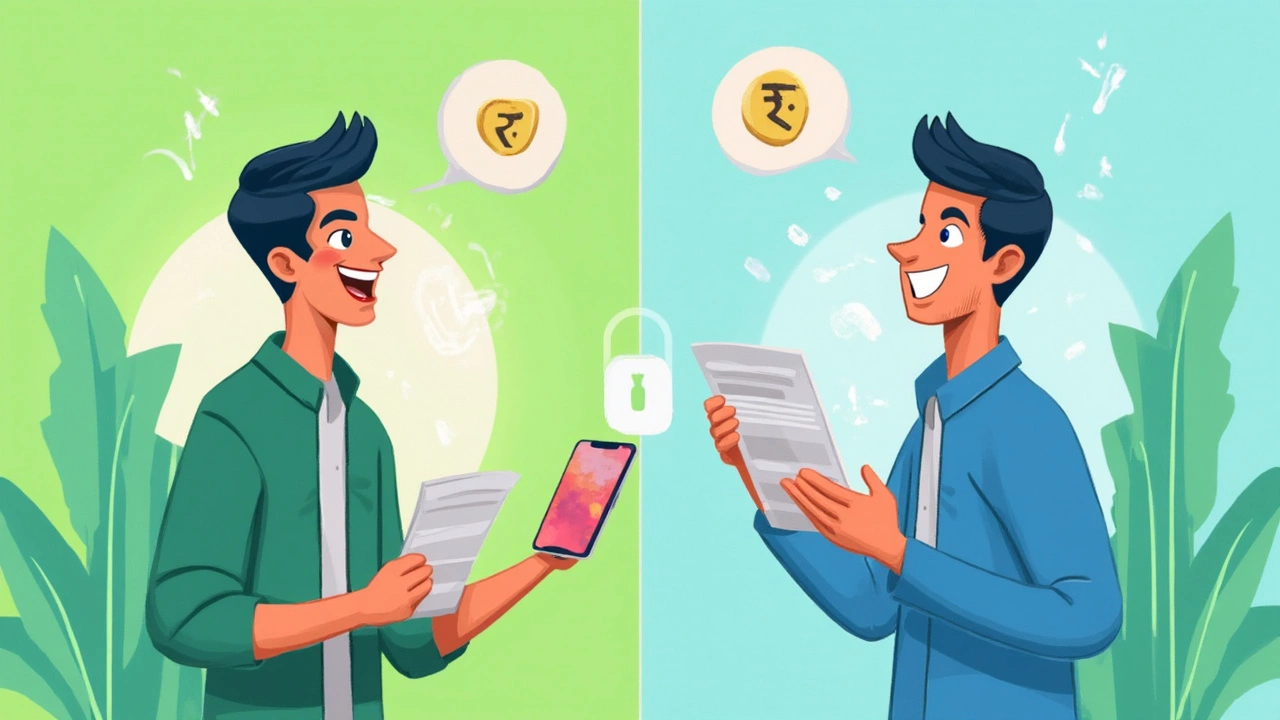Think you can master English without spending a dime just because Duolingo says it’s free? It’s true—you can learn a lot with zero money, but there’s more to the story.
The app lets you start learning right away. No credit card, no sneaky trial, not even an email needed to get going. You’ll get access to everyday English words, quick lessons, and their addictive streak system, which can keep you coming back. This is great if you just want daily bite-sized practice or you’re just starting out with English.
But those ads you see? They aren’t just a coincidence. Every lesson ends with them unless you pay to upgrade. And if you run out of “hearts” by making too many mistakes, you’ll have to wait or do extra review lessons. That can be a little annoying if you’re on a roll.
If you’re just looking for a way to dip your toes into English, Duolingo’s free stuff goes a long way. You can even set your own daily goal and challenge friends to keep motivated. But that green owl does have a few tricks up his sleeve to nudge you toward paying for perks. Let’s talk about where those limits actually show up.
- What Duolingo Gives You for Free
- Where the Free Version Falls Short
- What Goes Behind the Paywall?
- Real Costs: Time, Ads, and Motivation
- Tips for Maxing Out Duolingo Without Paying
What Duolingo Gives You for Free
When people ask if they can really learn English for free with Duolingo, they’re mostly talking about what you get by simply signing up and using the app as-is. This means no monthly fees, no credit card details, and no trial periods.
So, what does "free" get you? Here’s the main stuff everyone can access without paying:
- All core language lessons for dozens of languages – including the full English course for beginners.
- Daily practice goals and reminders to keep your streak alive.
- Fun stuff like levels, gems, in-game rewards, leaderboards, and challenges (nothing gets locked out for free users).
- Listening, reading, writing, and speaking exercises, including voice recording (assuming your phone or laptop has a mic).
- Basic review and practice sessions so you don’t forget what you’ve learned.
- Access from almost any device – phone, tablet, or web browser. All you need is an internet connection.
Most people are surprised how much content is unlocked from the start—over 120 English units, split across a tree of small, bite-size lessons. Duolingo says this covers the basics up to low-intermediate (CEFR A1 to B1), so you’ll get exposed to key grammar, vocabulary, and natural phrases. You can go at your own pace and repeat lessons as often as you want.
Here’s a handy table that breaks down what’s free versus paid for some popular features:
| Feature | Free Version | Paid (Super Duolingo) |
|---|---|---|
| All English course lessons | Yes | Yes |
| Stories for practice | Yes | Yes (plus early access) |
| Daily streak | Yes | Yes (streak repair included) |
| Grammar tips | Yes | Yes |
| Hearts (lives system) | Limited (5 max, refill by waiting/earning) | Unlimited |
| Advertising | Yes, between lessons | No ads |
The big win here is access. You don’t get held back from any lessons, and you can pretty much build your foundation with what’s on offer for free. If you’re a parent like me and want your kid to try learning English, there’s nothing stopping you from setting up an account and seeing how far they get without opening your wallet.
Where the Free Version Falls Short
The dream of learning English completely free is tempting, but let’s get real about where Duolingo’s free version hits its limits. Yes, you get loads of lessons and fun ways to test yourself, but the useful stuff for real language growth has its roadblocks.
First up: ads. Every lesson, review, or mistake comes with an annoying advert. These aren’t just quick pop-ups—you might watch 30 seconds of the same game ad again and again. For some people, that’s enough to break their study groove. If you want smooth, uninterrupted time, it’s a big tradeoff.
Another pain is the “heart” system. Free users get five hearts—mess up five times, and you’re out until you either review old lessons to earn hearts back or just wait it out. If you’re the type who wants to grind out all your lessons in one sitting, you’ll hit that wall fast.
Then there’s access to advanced content. Free Duolingo gives you the basics, but once you reach higher units, extra review activities and legendary levels are paywalled. No off-line access either, which is tough if you have spotty internet.
Here’s what the experience looks like for many free users:
- Ads pop up after every lesson or practice session.
- Lose all hearts? Wait hours, or replay old stuff and rack up streak freezes by accident.
- No unlimited review—practice is limited if you keep messing up.
- No in-depth grammar explanations, just quick tips. Want details? You’re mostly on your own.
- No downloaded lessons—have to be online every time you study.
Check this comparison:
| Feature | Free Version | Paid Version |
|---|---|---|
| Access to Lessons | Yes | Yes |
| Ads | Yes | No |
| Hearts/Lives | Limit of 5 | Unlimited |
| Offline Access | No | Yes |
| Legendary Levels | No | Yes |
| Extra Practice | No | Yes |
For folks just starting out, the free version of Duolingo still has real value. But if you’re serious about getting fluent or hate interruptions, you’ll hit the ceiling pretty quickly. That’s when you’ll face the nudge to upgrade.

What Goes Behind the Paywall?
So, what exactly do you have to pay for on Duolingo? The free version covers a lot, but the best extras are locked up in Duolingo Super (previously called Plus). Here’s what paying actually gets you—and what stays off limits if you stick with the free version.
Duolingo Super removes all the ads that pop up after lessons. That alone makes things way smoother, especially when you’re trying to focus. Another biggie: unlimited hearts. Mess up as much as you want, no annoying “wait for hearts to refill” timer standing in your way. This is handy if you like to binge lessons or just don’t want interruptions.
There’s more behind the curtain:
- Progress tracking and reports: Super users get extra practice quizzes and personalized feedback. This makes it easier to see where you’re actually improving (or slacking).
- Mastery Check: Want to blitz through old content and jump levels fast? The Mastery Check tool lets you prove what you know so you don’t waste time on basics.
- Unlimited test-outs: In the free version, you can only “test out” of a few skills at a time. Pay, and you can skip ahead nonstop if you’re blowing through easy stuff.
- Quicker repair for mistakes: Made a bunch of errors? Super lets you fix those red marks instantly instead of grinding away at old lessons.
One more thing—offline access. Only Super members can download lessons to study without internet, which is a lifesaver for planes, subways, or just dodgy Wi-Fi.
Now, you can still use Duolingo’s main features for free and learn English every day, but all these paid perks really speed things up—and take some annoyances away. Just remember, spending money doesn’t automatically make you fluent. But if you want a smoother or faster ride, that’s where the paywall comes in.
Real Costs: Time, Ads, and Motivation
So, Duolingo’s free offer sounds great—until you realize you’re actually “paying” in other ways. Let’s break down what you really spend when learning English on the free plan.
First off, those ads. Every time you finish a lesson, a video or banner pops up. Each ad adds five to fifteen seconds. Over a week, if you’re doing ten lessons a day (which is typical for people getting serious), you’re losing close to 15 minutes just waiting. That’s time you could spend actually practicing English or, honestly, anything else.
If you mess up too much, Duolingo limits you with “hearts”—and running out means you can’t keep going right away. To get hearts back, you either wait, practice older lessons, or pay for more. It can mess with your momentum, especially when you’re finally nailing down a tricky grammar point.
- Free users average three to six ads per ten lessons.
- Hearts take about four hours each to refill if you’re out.
- In the app’s forums, tons of users say ad interruptions are their biggest frustration.
Here’s a look at how time and interruptions stack up for free users compared to Plus (the paid version):
| Free User | Duolingo Plus | |
|---|---|---|
| Ads per 10 lessons | 5-6 | 0 |
| Heart Limit | Yes (5 hearts) | No limit |
| Average time lost to ads/day (10 lessons) | 15 minutes | 0 minutes |
What about motivation? The streak system and leaderboards help, for sure. But hitting a “paywall” because of lost hearts or interruption by ads can kill motivation fast. It gets frustrating to replay the same review lessons just to unlock more hearts, especially if you only have a short break before heading to work or picking up your kid from school.
Don’t forget real learning also eats time, not just because of ads. Quality practice means repeating exercises and speaking out loud, not just rushing through. Relying only on Duolingo makes it tempting to treat it like a game, but language skills need deeper practice outside the app, too.
If you’re trying to study seriously, the real cost of free isn’t just your patience—it’s your focus and time. If that doesn’t bother you, cool. Just know what you’re trading: a bit of cash for a lot less hassle, or a lot of little interruptions for free lessons.

Tips for Maxing Out Duolingo Without Paying
If you want to learn English with Duolingo and never spend a cent, you definitely gotta be smart about it. Here are some proven tactics to help you squeeze every drop out of the free version, without getting stuck or frustrated.
- Duolingo only gives you five “hearts” at a time in the free version. Make too many mistakes and you’re locked out. You can earn hearts back by practicing older lessons in the “Practice” section. Bonus: these old lessons help you remember stuff better anyway.
- Download lessons when you have WiFi. Yep, even free users can download lessons for offline use if you’re fast. This way, train rides or bad connections won’t keep you from hitting your daily goal.
- Turn off the sound and skip the stories if you’re watching your data or need to focus. The core skill practice (translate, listen, type) works just fine on silent.
- Watch the daily ads if you want to get extra hearts a little faster or double your XP points for a lesson. It’s not fun, but it keeps you moving forward.
- Set your daily goal as low as Duolingo lets you—just 1 XP a day. This keeps your streak alive even on rough days, and you can always do more if you have time.
- Join or make a Duolingo “friends” group. Every week, your friends can cheer you on, and there’s a little extra XP up for grabs in challenges.
- Use the web version of Duolingo whenever possible. The desktop website lets you practice skill levels back-to-back without losing hearts, and there are fewer ads than the mobile app.
- Take screenshots of hard questions. This makes it easy to review later, especially if you want to check answers or come back when you’re stuck.
None of these tricks will make you fluent overnight, but you can get way farther with free Duolingo than most people think. Stay steady, fix mistakes by practicing, and don’t fall for every little paid add-on that pops up. That’s how you stretch the app without shrinking your wallet.
